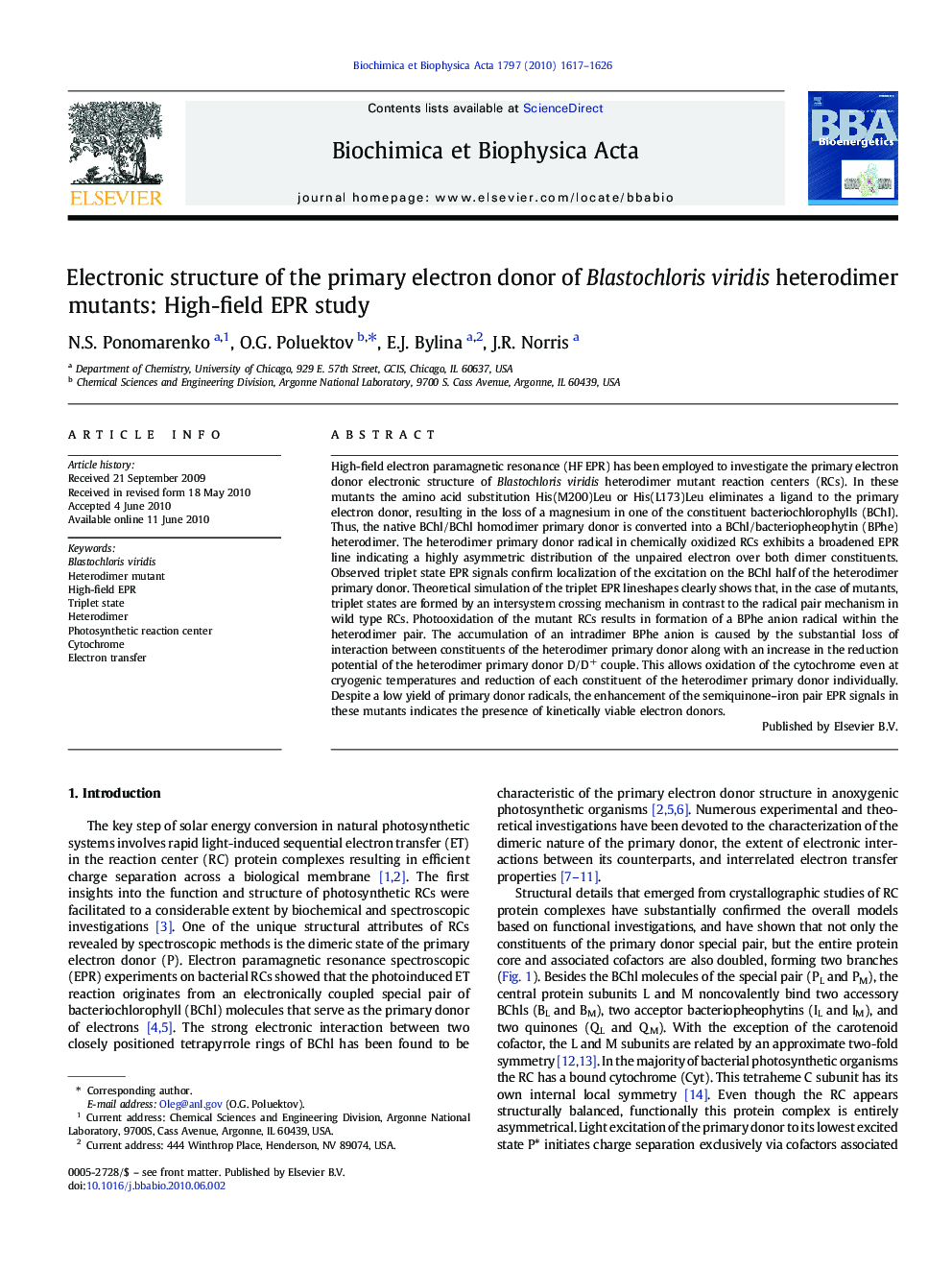| Article ID | Journal | Published Year | Pages | File Type |
|---|---|---|---|---|
| 1942775 | Biochimica et Biophysica Acta (BBA) - Bioenergetics | 2010 | 10 Pages |
Abstract
High-field electron paramagnetic resonance (HF EPR) has been employed to investigate the primary electron donor electronic structure of Blastochloris viridis heterodimer mutant reaction centers (RCs). In these mutants the amino acid substitution His(M200)Leu or His(L173)Leu eliminates a ligand to the primary electron donor, resulting in the loss of a magnesium in one of the constituent bacteriochlorophylls (BChl). Thus, the native BChl/BChl homodimer primary donor is converted into a BChl/bacteriopheophytin (BPhe) heterodimer. The heterodimer primary donor radical in chemically oxidized RCs exhibits a broadened EPR line indicating a highly asymmetric distribution of the unpaired electron over both dimer constituents. Observed triplet state EPR signals confirm localization of the excitation on the BChl half of the heterodimer primary donor. Theoretical simulation of the triplet EPR lineshapes clearly shows that, in the case of mutants, triplet states are formed by an intersystem crossing mechanism in contrast to the radical pair mechanism in wild type RCs. Photooxidation of the mutant RCs results in formation of a BPhe anion radical within the heterodimer pair. The accumulation of an intradimer BPhe anion is caused by the substantial loss of interaction between constituents of the heterodimer primary donor along with an increase in the reduction potential of the heterodimer primary donor D/D+ couple. This allows oxidation of the cytochrome even at cryogenic temperatures and reduction of each constituent of the heterodimer primary donor individually. Despite a low yield of primary donor radicals, the enhancement of the semiquinone-iron pair EPR signals in these mutants indicates the presence of kinetically viable electron donors.
Keywords
Related Topics
Life Sciences
Agricultural and Biological Sciences
Plant Science
Authors
N.S. Ponomarenko, O.G. Poluektov, E.J. Bylina, J.R. Norris,
